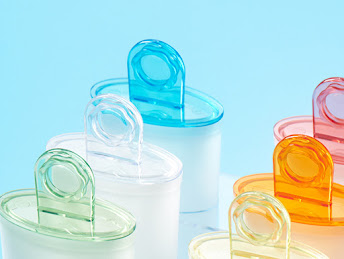An Overview of Chocolate Mould History
The history of chocolate moulds is lengthy and fascinating, going back many centuries. These moulds, which are used to shape liquid chocolate into different shapes, are now a necessary component of the production of chocolate. The plastic chocolate molds have changed through time from basic forms to elaborate patterns; their history dates back to the 18th century.
When chocolate was first introduced to Europe in the 17th century, the history of chocolate moulds began there. At that time, drinking chocolate was the primary method of consumption because it was a luxury good only for the wealthy. But as chocolate became more well-liked, so rose the need for fresh and inventive ways to serve it.
Metal, usually copper or pewter, was used to create the first chocolate moulds. These moulds had a straightforward structure of two halves that were joined by a clamp to form a hollow cavity into which the liquid chocolate was poured. The mould was opened to show a solid chocolate figure or shape after the chocolate had cooled and hardened.

Chocolate moulds developed more complex, complicated patterns and shapes in the 18th century. The talented artists who hand-crafted these moulds were in high demand among chocolatiers and confectioners. From straightforward geometric shapes to elaborate figurines, flowers, and animals, they were utilised to make a broad variety of chocolate shapes. These moulds were valued possessions that were frequently passed down from one generation to the next.
Tin and iron, two newly developed materials, were employed to create chocolate moulds as technology evolved, making them more widely available and more reasonably priced. By the 19th century, steam-powered machines were being used to mass create chocolate moulds, which improved the precision and consistency of the finished chocolate goods.
The Industrial Revolution led to substantial improvements in the production of chocolate moulds in the late 19th century. Rubber and plastic were two new materials that made plastic moulds for producing chocolate significantly more versatile and less expensive. Rubber moulds were more versatile and simple to use since they could be bent and twisted to readily remove the solidified chocolate. When plastic chocolate moulds were first developed in the middle of the 20th century, they quickly gained popularity among chocolatiers and confectioners because they were lightweight, strong, and available in a broad range of forms and sizes.
The creation and use of chocolate moulds boomed in the 20th century. Chocolate moulds are now more readily available and more reasonably priced for the general public thanks to the development of mass production and modern technologies. They were utilised by amateur bakers and home cooks in addition to professionals, enabling more creativity and innovation in chocolate manufacturing.
Chocolate moulds are available in a huge variety of shapes, sizes, and styles nowadays. Numerous materials, including as silicone, polycarbonate, and stainless steel, are used to create them. Home cooks and baking lovers favour silicone moulds because they are versatile, simple to clean, and available in a huge range of forms and styles. Professional chocolatiers choose polycarbonate moulds because they are strong and heat-resistant, enabling accurate and consistent results. Moulds made of stainless steel work well for producing big quantities of chocolate goods since they are strong and resistant to high temperatures.
In recent years, personalised chocolate moulds with detailed patterns and designs have also been made using 3D printing technology, which was previously unattainable. As a result, chocolatiers and confectioners are now able to push the limits of what is possible with chocolate moulds. This has created new opportunities for innovation and customisation in chocolate creation.
Chocolate Molds and Creative Gift Giving
Chocolate molds are a fun and versatile tool for creative gift giving. Here are some ideas on how you can use chocolate molds for creative gift giving:
1. Personalized Chocolates: Chocolate molds come in various shapes and sizes, allowing you to create personalised chocolates with names, initials, or special messages.
2. Themed Chocolates: Chocolate molds come in a wide range of themes, such as animals, sports, holidays, and more.
3. Special Occasion Chocolates: Chocolate molds are perfect for creating chocolates that celebrate special occasions, such as weddings, baby showers, graduations, and birthdays.
4. Seasonal Chocolates: Chocolate molds can be used to create chocolates that are perfect for different seasons, such as Valentine's Day, Easter, Halloween, and Thanksgiving.
5. Gift Basket Additions: Chocolate molds can also be used to create chocolate treats that can be added to gift baskets.
Conclusion
The history of chocolate moulds is extensive and fascinating, going back many centuries. Chocolate moulds have had a significant impact on the growth and evolution of the chocolate industry, from their Mesoamerican roots to their widespread use in Europe during the 18th and 19th centuries.
Chocolate makers may now create distinctive and spectacular confections thanks to the more elaborate and detailed plastic injection mould designs that have evolved over time. Chocolate moulds are still an essential tool for crafting chocolate art today and they continue to spur creativity and innovation in the chocolate-making industry. Whether you're a professional injection molding maker or a home baker, chocolate molds offer endless possibilities for creating delicious and visually stunning treats.

Comments
Post a Comment